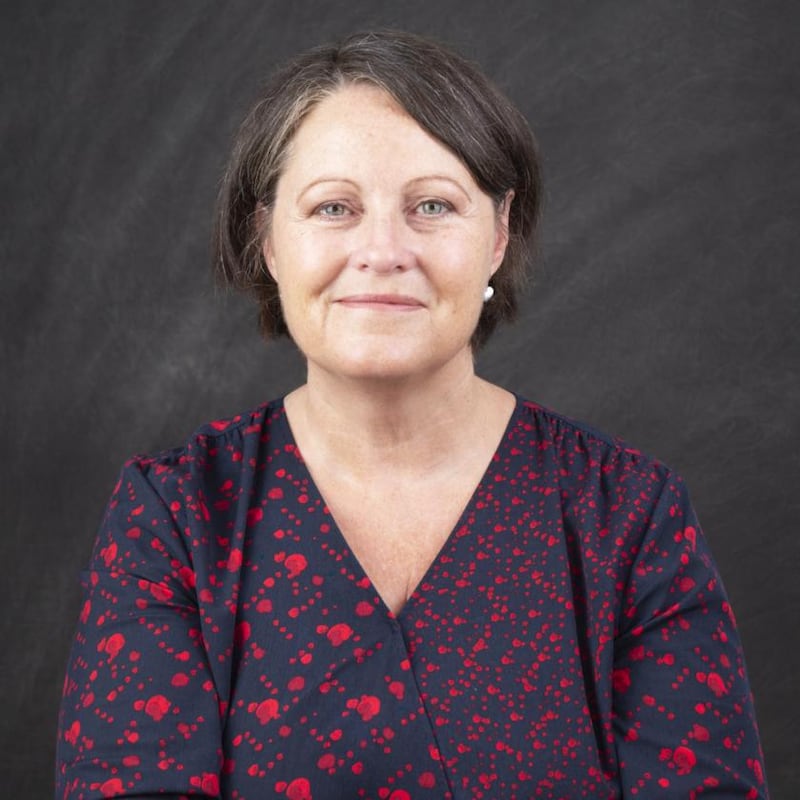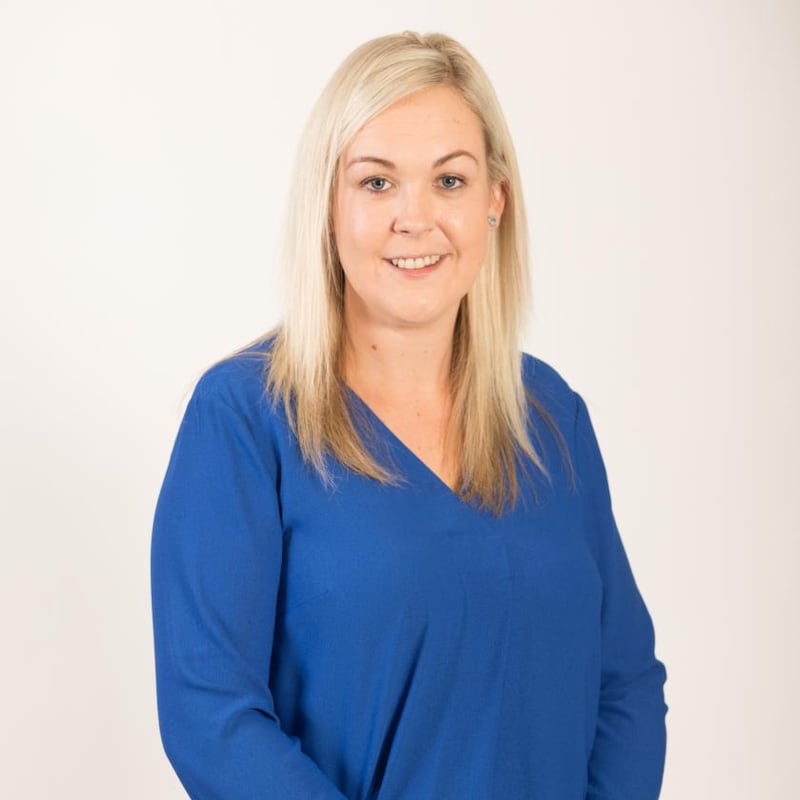There are about 78,000 people in Co Offaly and about half of them are women. You wouldn't think that to look at its County Council though. Of the 19 public officials representing the electoral areas of Birr, Edenderry and Tullamore, just one of them is a woman. Cllr Clare Claffey was elected in 2019. In the previous five-year term, there were no women councillors.
Claffey isn't alone in being alone. When it comes to participation by women in Ireland's County Councils, the numbers are dismal. In 2021, women held just 25 per cent, or 236 council seats, the rest, 713 were held by men. The 2019 local elections reveal a notable urban-rural divide in the likelihood of women being selected and elected for the council. Women accounted for 35 per cent of candidates contesting for seats in urban areas but just 23 per cent of candidates in more rural areas, according to research by the National Women's Council of Ireland (NWCI).
Following the 2019 election, the councils with the highest levels of women were predominantly in Dublin and the commuter belt. Dún Laoghaire-Rathdown had the highest proportion of women councillors at 48 per cent. Dublin City and Kildare were next at 41 and 40 per cent women respectively. At the other end of the scale, only one woman was elected in Longford County Council which had 18 seats, and just two women in Waterford, which had 32 seats. Mayo, Carlow and Kerry are also highly male-dominated councils. Only four out of 18 councillors in Co Roscommon are women and only three out of 18 in Sligo are women. In Donegal, just four out of 37 councillors are women.
So why are all the jobs for the boys?
There isn't one single reason, says Dr Michelle Maher of See Her Elected (She), an initiative aimed at getting more women in the rural constituencies of the North West and Midlands to engage in electoral politics. It runs SheSchool, a series of online workshops explaining how local government works and empowering women to run. It receives funding from the Department of Local Government.
She has also published a guide for women considering running in the 2024 local elections.

“One of the threads is that women wait to be asked,” says Maher. And for a long time, the main political parties haven’t been asking. People with disabilities, those from the Travelling community, people of different ethnicities and others remain much underrepresented too.
Research commissioned by the National Women’s Council of Ireland, Women beyond the Dáil: More women in local government, surveyed the 2019 elected councillors about their experience of getting on the ticket, campaigning and holding office. Local visibility through participation in civil society or community organisations was a common thread among successful candidates. Some 54 per cent of men surveyed entering local government held a role in a sporting organisation, including the GAA, compared with 23 per cent of women. Women candidates were active in the GAA too, but were more likely to hold a support role that was more difficult to leverage into political capital.
Indeed, when scanning for potentially electable candidates, the main parties have a tendency to look, again and again, in the same places.
Officials from the local GAA club, someone prominent in farming circles or the local business association are regular targets. The person washing the jerseys, running the volunteer playgroup or organising the litter pick isn’t seen as having quite the same heft. Where women are is not where political parties go looking for candidates.
Research by not-for-profit group Women for Election describes the main political parties as having a culture sometimes "resistant to women candidates". In the 2019 local elections, Fianna Fáil were bottom of the party league table having just 21 per cent women candidates. For Fine Gael it was 29 per cent and Sinn Féin 34 per cent. Newer parties People Before Profit had 59 per cent women candidates and the Social Democrats 55 per cent, though from a small base. The Green Party had 44 per cent women candidates.
Women for Election says members in the longer established political parties in particular need to do equality, diversity and inclusion training if they are to expand candidate recruitment and attract women from outside the party and women from underrepresented and marginalised communities.
'It was Repeal that did it for me. Seeing the change that ordinary people could make'
A 37-year-old mother of seven from Banagher, Clare Claffey wasn't on anyone's radar. When her now eight-year-old son was born, she set up Friends of Breastfeeding in the Midlands. "There was no help with breastfeeding, there was nowhere to turn so I started this buddy system. I would never have considered that activism at the time. It was just something I did." Her type of community volunteering made a huge difference to families, it was never going to win her a county medal though. When it came to running for the council, Claffey wasn't even on her own radar. "It never in a million years would have occurred to me. I'm not from a political background. I had nothing to do with politics, ever," she says.
That changed in 2018. “It was Repeal that did it for me. Seeing the change that ordinary people could make. It was my first involvement in anything political. We were knocking on doors and having the chats with people.
“I was never a bit into politics. It was from then I started to see everything we do in our day to day lives is to do with politics. I think people don’t see that, and they probably don’t think it matters.”
When fellow Together for Yes campaigners suggested she run in the 2019 local elections, she didn’t know anything about her local council. “I looked and there was no woman. There was no one who represented me and my views and my values and I said, you know, I’ll give it a go.” She attended SHESchool before running and describes its coaching on canvassing, time management and ways to collaborate with other women as “brilliant”. Looking at the different political parties, she felt the Social Democrats best aligned with her values. It was she who approached them.
After fellow newly elected councillor, the Green Party's Pippa Hackett, moved to the Seanad shortly after being elected, Claffey became the sole female Offaly County Council member sitting with 18 men. "They are great men in fairness," she says, though it can be difficult at times. "You might give an idea and you don't feel listened to and another fella will give an idea a little bit later on and it's, 'Oh fair play, that's brilliant,' and I'm like, 'I said that'. There are times when you don't feel as listened to as your colleagues, definitely."

One time she did have rapt attention however was when she brought a motion on period poverty which has seen free sanitary products made available at eight of Offaly’s council buildings for women in need. “I thought, you know what, they are not going to say anything,” jokes Claffey. “There have been a couple of things where they have not said anything and I know it’s because it’s, ‘she’s a woman, say nothing, we don’t know about this’.”
Compared with our European Union neighbours, Ireland, and rural Ireland in particular, is mostly run by men. That's despite the fact that more women than men live in Ireland, about 53,000 more according to Central Statistic Office figures. At 25 per cent, the number of women in local government is significantly below the EU28 average of 32 per cent for women's representation in local politics. Some EU countries are doing much better than others. In Sweden, women hold a 47 per cent share of members of regional assemblies, according to the European Institute for Gender Equality. In France, women make up 49 per cent of regional assemblies, in Finland, it's 45 per cent. High levels of female participation in local government can translate into better gender balance in national politics. Swedish women hold 48 per cent of parliament seats and 52 per cent of Sweden's ministers are women. There is no such pipeline here.
Female representation in local government matters, says Maher. “Our county councils are the only branch of government that is solely focused on where we live and how we conduct our lives. Their decisions really matter in our day to day lives, so it’s important to have women in the room where the decisions are being made.”
Local authorities are the main providers of social housing, they oversee planning permissions, including the change of use of buildings, they maintain and improve local roads, public parking, they set local speed limits, maintain street lighting and operate the fire service. They provide funding for local youth, arts and sports services and operate libraries, public swimming pools, leisure centres, playgrounds, parks. They employ dog wardens, deal with noise pollution, they play a role in waste collection, environmental protection and in supporting local economic development and enterprise. A footpath that fits a buggy or a wheelchair, an accessible playground where the swings work, a walking or cycling route to school, recreational amenities that are well lit, parking that is accessible and safe, emergency accommodation for families in crisis – these are things that inordinately affect the lives of women who statistically shoulder more caring responsibilities than men.
'In a representative democracy, it matters who represents us and what they represent'
If 75 per cent of those making decisions on these matters are men, however enlightened, it’s unlikely the lived experience of women is being adequately represented. The National Women’s Council (NWCI) says local government’s proximity to women’s lives puts it in a unique position to improve the representation of women’s interests in this country: “In a representative democracy, it matters who represents us and what they represent,” the NWCI says. Councils shouldn’t have to guess how their plans for the county will play out for women, says Maher. “They should know because half of them should be women.”
So where are all the women? NWCI research cites caring responsibilities as a significant factor influencing opportunities for women to enter politics. Irish women spend on average double the time of men on caring and more than twice as much time on housework, according to research by the Economic and Social Research Institute. More than half (54 per cent) of male respondents to the NWCI survey of councillors reported having no care responsibilities compared with 40 per cent of women. Being a councillor is a part-time job and therefore could, in theory, be doable for a woman balancing caring responsibilities with work, but that’s not how it works.
Sinn Féin TD for the constituency of Longford-Westmeath, Sorca Clarke was just one of three women elected to Westmeath County Council in 2014. It was her second time running for public office and her first time elected. She was an accountant who ran a business with her husband and a mother of four children, one of whom is on the autism spectrum. "I was 37 weeks pregnant with my fourth child when I was elected to the council. From the very start, and I do mean the very start, there were barriers," she says.
At the very first council meeting, a Cathaoirleach is voted in by show of hands. “I was due to be in hospital for a check-up, quite normal when you are a pregnant woman. There was no mechanism for me to vote by proxy, in absentee or in advance. I had to make a decision about where I was going to be. No one should ever have to make that decision. It’s archaic,” says Clarke. “The only advice that I was given is that I should have considered a judicial review. That wasn’t good enough seven years ago and it’s still not good enough today. That is a serious problem for women.”
'I had no problem popping my daughter into her buggy and marching myself in to do my representation work because that was my job'
Clarke describes “stumbling” through her first months in office with a newborn baby. There is no provision for councillors to take maternity leave. “I shouldn’t have been put in a position where I was forced to look for childcare for a child that was so young. This is something that needs to be rectified.” She managed as best she could.
“My constituents got used to me quite quickly rocking up with a newborn baby in tow, but that doesn’t make it right. I had no problem popping my daughter into her buggy and marching myself in to do my representation work because that was my job. There was never anything said to me, that I couldn’t do that, but there was an air and an atmosphere of shock and horror.”
Women are expected to work as if they don’t have children but they’re expected to parent as if they don’t have careers, Clarke told a Dáil debate on gender balance in politics last year.
Name recognition, local reputation and identification with the locality is particularly important to electability in rural Ireland. Some 54 per cent of male councillors in the NWCI survey had lived in their constituency for their entire lives compared with 31 per cent of women. Historically, women were more likely to move location on marriage, particularly in rural areas, researchers note. This may hinder their electability. Party membership and activism is often a prerequisite for candidacy and electoral success for both men and women too, the research notes.
First-time councillor for Wexford, Fine Gael's Bridín Murphy says her father was prominent in the party locally and she had been involved growing up. Elected in 2019, she had the party behind her.
"They [Fine Gael] were looking for a young female in the Wexford constituency, and in New Ross in particular. They had spoken to a councillor, a male colleague, who was retiring and he was the person who suggested my name," says Murphy. There are 28 male and six women councillors in Wexford. "My motivation for running was to increase female participation, to be that voice for women at the table in terms of policy," she says. Murphy is Cathaoirleach of New Ross municipal district where she is the only female voice.

Not all women earmarked to run however get the same party support, particularly in the larger parties. Many women note being asked to run at very short notice. “The practice of adding women to the party ticket later on in the election cycle, or delaying selection conventions has implications for their capacity to run,” the NWCI research states. Having a longer canvass gives women the time they may need to mobilise support and organise their lives to run, especially given that family and childcare obligations fall disproportionately to them.
In the 2019 local election, an incentive scheme that provided monetary rewards to parties that met a 30 per cent quota of women candidates, while welcome, may have encouraged parties to add women candidates at a late stage, says the NWCI research. Indeed, some women encouraged to run and given assurances of support found that it evaporated. Other women reported being described as “the quota candidate” in a disparaging way.
"That's definitely a problem and we need to move away from that," says Fianna Fáil councillor for Galway, Mary Hoade. "Selecting someone and not resourcing them I think is extremely unfair to the candidate. The day of putting someone on to meet a quota is gone and we need to realise that."
Quotas for women and men candidates for Dáil elections will rise from 30 to 40 per cent for elections held after February next year. The Citizens’ Assembly on Gender Equality has recommended that by the end of this year, gender quotas be extended for party candidates to local, Seanad and European elections.
Michelle Maher fully supports quotas for local elections. "But political parties can't just pay lip service to those quotas," she warns. Last year, Minister for Planning and Local Government Peter Burke launched a new scheme where political parties were allocated funding linked to tangible measures to support women to run in the next elections. The money can be used for hosting women's conferences, employing dedicated gender/diversity staff within parties, hosting policy and training workshops as well as candidate recruitment campaigns.

Parties are being asked to do more than hit a quota of women candidates on the ticket, they must support those women to win. Once in office however, the job needs to be better structured and paid to retain them.
Council meeting times can seem to presume a representative has no caring responsibilities, is flexibly employed or doesn’t need to hold another job to pay the bills. “Our main meeting is in the afternoon and it can run on late, whereas if it was in the morning, it’s more suitable for families with children in school,” says Cllr Clare Claffey. “If a meeting time is changed at the last minute, I couldn’t go because I couldn’t get childcare at the last minute,” she says. An upside, however, she says is that outside of meetings she can make council-related phone calls and emails fit around family life.
The role of councillor is part-time with a salary of €26,153, having increased from €18,706 just last year on the recommendation of the Moorehead report on the role and remuneration of local authority elected members. A councillor’s work week is 18.5 hours, the report said. Other studies have shown councillors work 32.5 hours a week.
Cllr Bridín Murphy works full-time as a social worker with Tusla. Aged in her 30s, Murphy is going through the milestones of many women of her generation. She is recently married, has bought a house and is expecting her first child. “For young people running, I suppose, your council wage is not considered if you are going for a mortgage, that means you have to have a full-time job.” Council meetings start at 2.30pm which is problematic if you are working full-time, she says. She takes annual leave from her work to attend. “I work nine to five and then I could be doing council work up until 9pm or 10pm. I am very lucky that I have a very supportive husband. There are women who are raising children on their own and we need to be cognisant of how difficult it would be for them. I am privileged and I am lucky, my husband appreciates that I am not always around and it does take a toll on a relationship.”

Cllr Murphy made headlines recently for, “having a baby during her first term as chairperson of the local municipal council”, according to the New Ross Standard.
There is no maternity leave for councillors. She could take up to six months off before losing her seat. “It’s not easy as the public have an expectation, and rightly so, that I will be present at meetings to raise things they have brought to me. It’s a concern that if I miss meetings that people will start to worry that I am [not] up to the job. It is a worry that in effect there is no maternity leave,” she says.
Since her pregnancy made headlines there has been plenty of positive reaction from constituents, but also an increase in negative comments online that she is using her pregnancy to get publicity, she says. “I happened to be in our local town the day after the paper came out and somebody said, ‘It must have been a slow news week if they had to put that on the front of the paper’. But it should be news, I think. It’s a positive message for women to see me in this position. She can do it, maybe I can do it too. But it is difficult and it has to be made easier.” The six women elected representatives of Wexford County Council have now formed the Wexford Women’s Coalition to support each other and work towards increasing the number of women councillors.
The Citizens' Assembly has recommended the introduction of maternity leave for councillors. The Moorehead report recommended it too. As former president of the Association of Irish Local Government, and a councillor of 20 years, Mary Hoade too has been active in lobbying for maternity leave for councillors. "[Minister for Justice] Helen McEntee has led the way. The support needs to be there to retain female councillors to stay on more than one term."
'At present we cannot be happy with the level of representation in place in both our local authorities and the Oireachtas'
Change will likely come too late for Cllr Bridín Murphy, but it may be on the way. The Department of Local Government says “a package of maternity-related measures, including proposals for legislative change, are at an advanced stage and will soon be brought to cabinet for approval”.
"It is a priority of mine to see more female candidates being supported and encouraged to take a first step into local government," says Minister of State for Local Government Peter Burke. "I am also concerned about retention of female councillors and the maternity leave proposals which I am bringing forward, as well as the recent improvements in terms and conditions, will work to combat this." Our political system should reflect the society it serves, he added. "At present we cannot be happy with the level of representation in place in both our local authorities and the Oireachtas. "
In 1974, the percentage of women elected in local elections stood at 6 per cent. After the 2019 election, 45 years later, representation of 25 per cent remains woeful. The over-representation of one gender in local government and the lack of diversity in general around the table serves no one.
Cllr Care Claffey’s advice to women thinking of running in 2024 is , “definitely say give it a try”.
“It is harder for women. The campaign is expensive, the canvas is long, the hours are long, the juggling, childcare can come into it, but there is value in having women at the table. I do enjoy it. I’ll run again.”

















